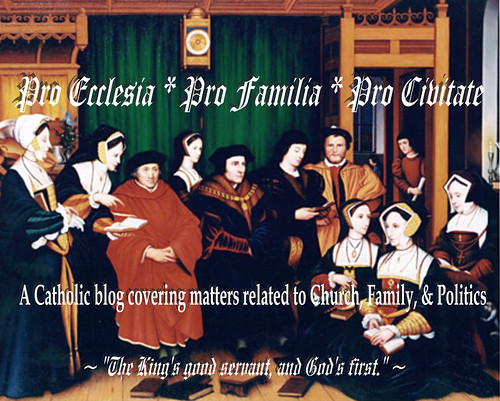Bishop Blair: "Bursts of Divine Glory"
Toledo Bishop Leonard Blair writes in the June 2009 issue of The Catholic Chronicle:
Bursts of divine glory
Written by Bishop Leonard P. Blair
Friday, 05 June 2009
... I am referring to three great solemnities: The Most Holy Trinity on June 7, The Most Holy Body and Blood of Christ (Corpus Christi) on June 14 and the Most Sacred Heart of Jesus on June 19. All three were instituted to celebrate a particular mystery of faith in the wake of Easter joy.
Now, I’ll focus on one in particular: The Most Holy Body and Blood of Christ (Corpus Christi) on June 14.
***
The sacrament of the most holy Eucharist has been with the church from the beginning in all its various aspects — as the sacrifice to be offered, as the sacred meal to be eaten, as Christ’s substantial Presence to be adored. The Solemnity of Corpus Christi in particular highlights Christ’s "Real Presence." Although already attested to in ancient times, our understanding, appreciation and adoration of this mystery has been constantly enriched by the church’s authentic teaching in the face of new questions and challenges, and especially by the insights of the saints — all under the inspiration of the Holy Spirit "guiding us to all truth."
***
... Even though there have undoubtedly been spiritual benefits to the revised liturgy, it also has to be acknowledged that among many Catholics something has been lost when it comes to reverence and respect for the holy Eucharist.
As the Solemnity of Corpus Christi draws near, I offer for your reflection the following excerpt from a little booklet issued in 2001 by the United States bishops titled "The Real Presence of Jesus Christ in the Sacrament of the Eucharist." The question asked is, "What are appropriate signs of reverence with respect to the Body and Blood of Christ?"
The answer is, "The Body and Blood of Christ present under the appearances of bread and wine are treated with the greatest reverence both during and after the celebration of the Eucharist. For example, the tabernacle in which the consecrated bread is reserved is placed ‘in some part of the church or oratory which is distinguished, conspicuous, beautifully decorated, and suitable for prayer.’ (Code of Canon Law, 938, ß2)
"According to the tradition of the Latin Church, one should genuflect in the presence of the tabernacle containing the reserved sacrament [unless prevented by age or illness]. In the Eastern Catholic churches, the traditional practice is to make the sign of the cross and to bow profoundly. The liturgical gestures from both traditions reflect reverence, respect and adoration.
"It is appropriate for the members of the assembly to greet each other in the gathering space of the church (that is, the vestibule or narthex), but it is not appropriate to speak in loud or boisterous tones in the body of the church (that is, the nave) because of the presence of Christ in the tabernacle.
"Also, the church requires everyone to fast before receiving the Body and Blood of Christ as a sign of reverence and recollection (unless illness prevents one from doing so). In the Latin Church, one must generally fast for at least one hour; members of Eastern Catholic churches must follow the practice established by their own church."
May God bless us with a profound gratitude for the sacramental gift that Christ makes of Himself in the most holy Eucharist. And may this year’s celebration of Corpus Christi lead us to greater appreciation of the church’s tradition of faith, reverence and respect for the Blessed Sacrament.
© Copyright 2002 - 2009 Catholic Chronicle
The Official Newspaper of the Catholic Diocese of Toledo
Labels: Bishops, Blessed Sacrament, Diocese of Toledo, Theology, Traditional Feast Days



0 Comments:
Post a Comment
<< Home